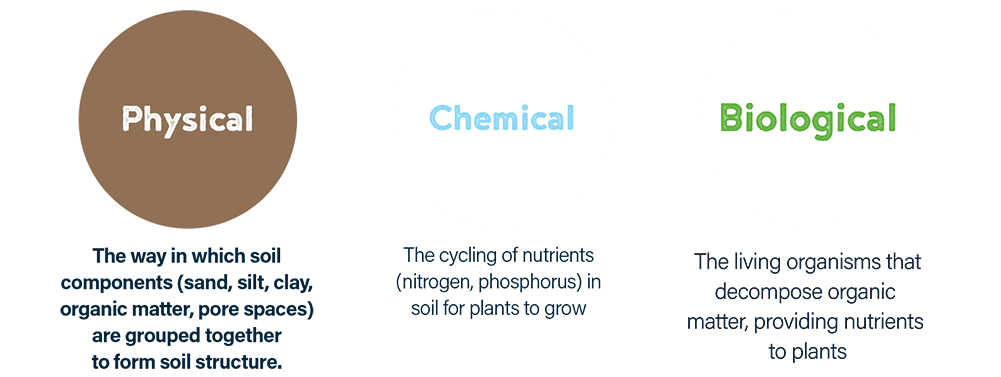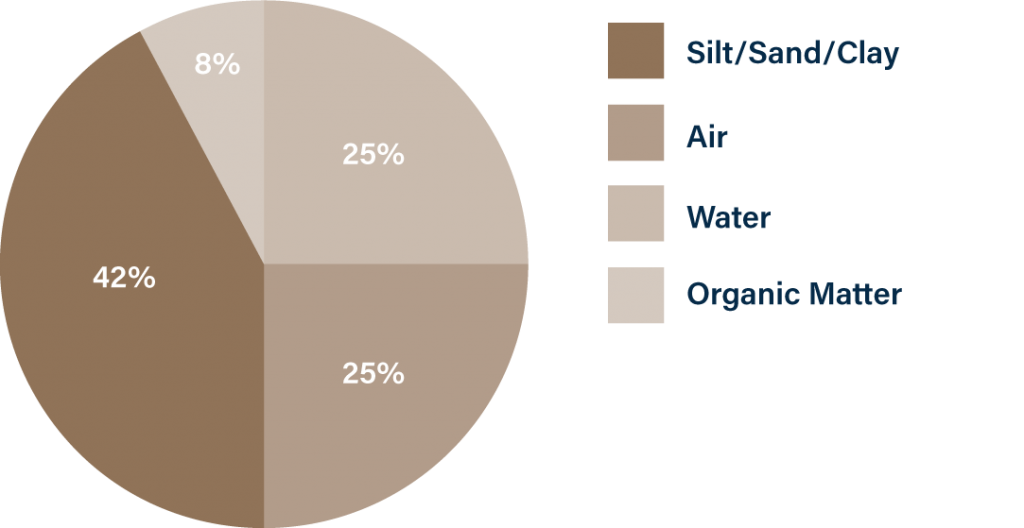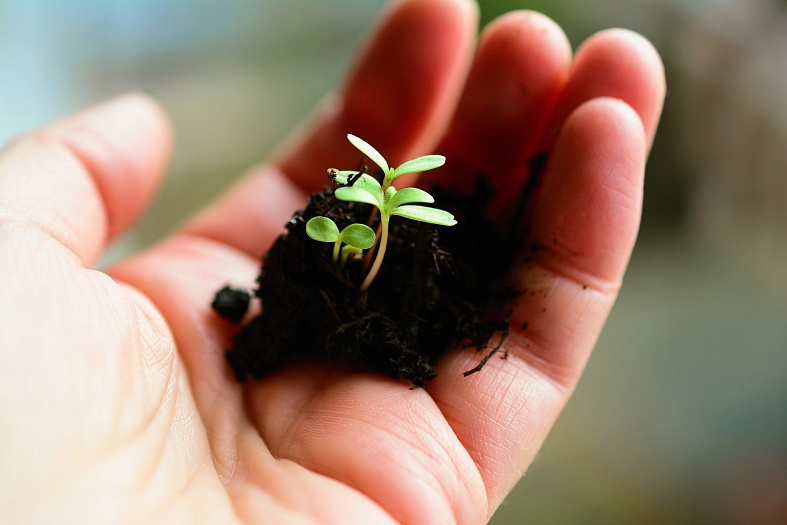Soil health: save today and take care of tomorrow
13.09.2021 | Crop rotation
Healthy soil is a farm's greatest asset and is crucial for growing crops and livestock, enriching ecosystems, sequestering carbon, and preventing flooding.
We need to think about life under the soil as well as life above it. Soil needs a good supply of water, air and nutrients, as do animals living above the surface. There must be a cycle in which the farmer takes care of the soil, the soil takes care of the plant, the plant takes care of the animal, and the animal takes care of the farmer. That's why every season, in every crop cycle, the right steps must be taken to keep the soil healthy.
The physical structure of the soil affects a number of functions, such as plant growth and other environmental influences such as erosion and leaching.
For soil to be healthy, we need to keep its three basic elements in mind. These elements are interrelated, so if one of them is out of balance, the other two can be negatively affected:

The structure of the soil determines the pore space, which in turn affects root growth and the movement of air and water. Soil particles (sand, silt, clay, etc.) and organic matter collect over time into small clumps (aggregates) which give the soil its structure. Knowing soil properties such as texture, drainage class, and structure can help maintain soil health.
The physical condition of the soil and the shape of the soil aggregates depend on:
- Wet/dry cycles;
- Freeze/thaw cycles;
- Soil texture;
- Animal influences on soil;
- Farming/cultivation practices.
When soil has a healthy texture, it works as follows:
- Retains water after rainfall, ensuring a continuous supply of water and nutrients to plants;
- Stops nutrients from moving below the root zone and into groundwater;
- Helps minimize erosion.
Healthy soil consists of:

In recent years, soil health and biodiversity have been declining due to human activities and excessive, inappropriate use of agrochemicals.
The good news is that these effects are reversible. Farmers who use soil health practices will benefit from higher yields, increased food production, improved crop nutrition, and even help combat climate change (yes, healthy soil can do that too!).
As fall and winter come the theoretical planning season, now is the time to set your soil health goals for next year. Agrovent shares 5 tips for improving soil health:
1. Keep an eye on the physical health (structure and odor) of the soil.
Healthy soil should have plenty of air space to maintain aerobic conditions. This is important for improving biological function and the ability to hold carbon, which is the driving force behind soil, feeding fungi and microbes that help plants grow.
Healthy soil should have a good mix of aggregates, break up easily, contain lots of worms, and have a good, earthy smell.
2. Increase organic matter content.
Soil organic matter consists of plant and animal residues in various stages of decomposition. For every 1% increase in organic matter, 0.4 hectares of soil absorbs 10 times more carbon from our atmosphere. In addition, for every 1% increase in soil organic matter, the soil can retain an additional 70,000 liters of water/ha.
Good organic matter has several other benefits, including:
- Expanding pore space, which improves water infiltration and aeration;
- Providing food for living organisms in the soil;
- Increasing soil biodiversity;
- Reducing the number of diseases and pests.
An in-depth soil analysis is needed to determine the organic matter content of the soil. Ideally, soil organic matter should be more than 3%, otherwise the soil will not contribute to crop growth. One should strive to increase organic matter and have regular (every two years) analyses to track progress.
3. Maintain soil biodiversity.
Biodiversity loss is at the top of the list of global issues. Soil biodiversity is related to the diversity of living organisms in the soil. In healthy soil, the living mass below the surface should be equal to the living mass on the surface.
Soil organisms help the soil store carbon and reduce greenhouse gas emissions.
4. Keeping an eye on the chemical health of the soil.
Soil chemistry encompasses the elements and compounds necessary for plant growth. They have a direct impact on soil structure and biology and are key in providing vital nutrients to soil organisms and plants. For example, if some of them are too high, they have a detrimental effect on soil biology. The availability of chemical elements depends on the type and composition of the soil.
Element content depends on a number of factors, including soil type, pH, organic matter, and cation exchange. To find out the elemental content of your soil, do an in-depth soil analysis and discuss it with your agronomist.
5. Avoid soil compaction.
Soil compaction is one of the biggest problems, it can be a huge obstacle to moisture penetration.
Water must infiltrate the soil to reduce surface water levels, encourage deep rooting, and create good conditions for life deep in the soil. Improved water retention also helps resist drought.
Crop storage begins as early as the field! So if you want to extend the shelf life of your harvested vegetables or fruits, it's time to take care of your soil!
Any questions? Call +74952293903, write info@agrovent.com. Or contact our specialist via messengers using the form in the lower right corner of the screen.

